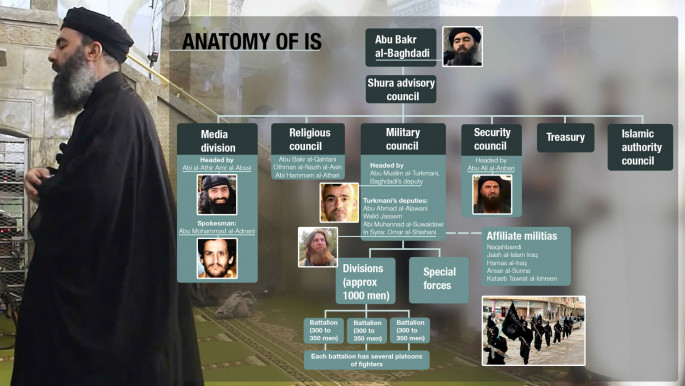IS destroying Syria and Iraq's unearthed ancient treasures
Islamic State group militants in Syria have destroyed masses of previously unearthed ancient statues and cuneiform tablets.
The latest extent of IS' purge of ancient monuments was seen in Tal Ajaja, one of Syria's most important Assyrian-era sites, and captured by Kurdish fighters earlier this year, AFP reported.
The town lies around 50 kilometres (30 miles) from the Iraqi border, in north-western Syria.
When Kurdish fighters entered the ancient site perched on a hilltop, they found that IS militants had pillaged the site.
Fragments of broken artefacts were strewn around the place with holes dug into the ground where new treasures were found and then destroyed.
Heritage
The Assyrian empire, with its capital in Nineveh in modern-day Iraq, flourished in the first millennium BC.
It produced celebrated artifacts, particularly bas-reliefs often depicting scenes of war.
"Tal Ajaja, or ancient Shadikanni, was one of the main cities of Assyria," said Cheikhmous Ali of the Association for the Protection of Syrian Archeology.
Most of the known treasures of Tal Ajaja, discovered in the 19th century, had long been removed and placed in museums in Syria or abroad.
But when IS captured the town the militants dug up previously unearthed monuments and either destroyed them or trafficked them out of their territories.
"They found items that were still buried, statues, columns. We've lost many things," lamented Maamoun Abdulkarim, head of Syria's antiquities department.
Khaled Ahmo, director of the antiquities department in Hasakeh, said that more 40 percent of Tal Ajaja was destroyed or damaged by IS.
"The tunnels that were dug destroyed invaluable archaeological strata" which would have revealed key details of life in the ancient city, he told AFP.
IS believe than ancient statues, idols and shrines should be destroyed, even those from religions or empires that have long since vanished.
 |
However, the group's anti-iconographic principles only go so far. Many treasure from sites and museums seized in Syria and Iraq have been shipped out of the country and sold in the black market to finance the organisation's reign of terror.
In other times, the militants have took sledgehammers to monuments in videos, as was seen in 2014 with the vandalism and destruction of Assyrian statues from Tal Ajaja dating back to 2,000-1,000 BC.
"These barbarians have burnt pages of Mesopotamia's history," said Abdulkarim.
"In two or three months, they wiped out what would have required 50 years of archaeological excavations."
Vandalism
Among the damaged statues and cuneiform tablets at the site there was also the priceless bas-relief depictions of the lamassu - the famous winged Assyrian deity - which was also ruined.
"IS turned the hilltop into a military zone," a local resident Khaled - who spoke on condition a pseudonym be used because he still fears IS might return - told AFP.
"No one was allowed to enter the site without authorisation," he added.
"Hordes of armed men came in, along with traffickers of archeological objects," said another resident, Abu Ibrahim.
The UN cultural organisation has described the jihadists' actions as "cultural cleansing" and the actions have been part of a plan to destroy all identies but their own.
IS militants have enforced its own interpretation of sharia often alien to Sunni residents in Syria and Iraq.
They have also sought about the destruction of ancient religious and ethnic groups such as the Yazidi, enslaving women, and killing men and elderly.
Militants have also tried to wipe out Sufis, Shia and Christians.
Agencies contributed to this story.
More than 900 monuments and archaeological sites in Syria have been affected, damaged or destroyed by the country's war.
Much of the damage has been inflicted by the jihadi group's rampage against Syrian heritage or regime bombing, according to the Association for the Protection of Syrian Archaeology, but other militias have also sold items.
Among the worst incidents inflicted by IS was the destruction of temples in the famed ancient city of Palmyra, which provoked international outrage, but there are now other sites being won from the jihadis which is revealing the true extent of their cultural purge.





 Follow the Middle East's top stories in English at The New Arab on Google News
Follow the Middle East's top stories in English at The New Arab on Google News


